
CANO ISLAND by Diving Squad
Costa Rica‘s remote Osa peninsular juts out from the southwestern corner of the country, largely isolated from the rest of it by crocodile infested rivers and thick mangrove swamps.
Despite making up less than 5% of the country, it’s home to at least half of all it’s species, many of which are found within Corcovado National Park; the crown jewel and biggest of Costa Rica’s rainforest reserves.
It is a lush and sparsely populated area, with only a handful of travellers passing through; most come to trek Corcovado and then leave after a day or two.
But there is another reason to visit; Isla del Cano, located 16km northwest of the Osa Peninsular is a biological reserve and home to the last surviving coral reef of Costa Rica’s Pacific Coast.
The waters around Cano Island are a hauntingly beautiful place to dive – yet they barely get mentioned within the scuba diving community!
In this guide, I describe my experience scuba diving at Isla Del Cano, how to get to and stay at the nearest launch pad: Drake Bay, what time of the year to go and also how to trek Corcovado after. Let’s dive in!
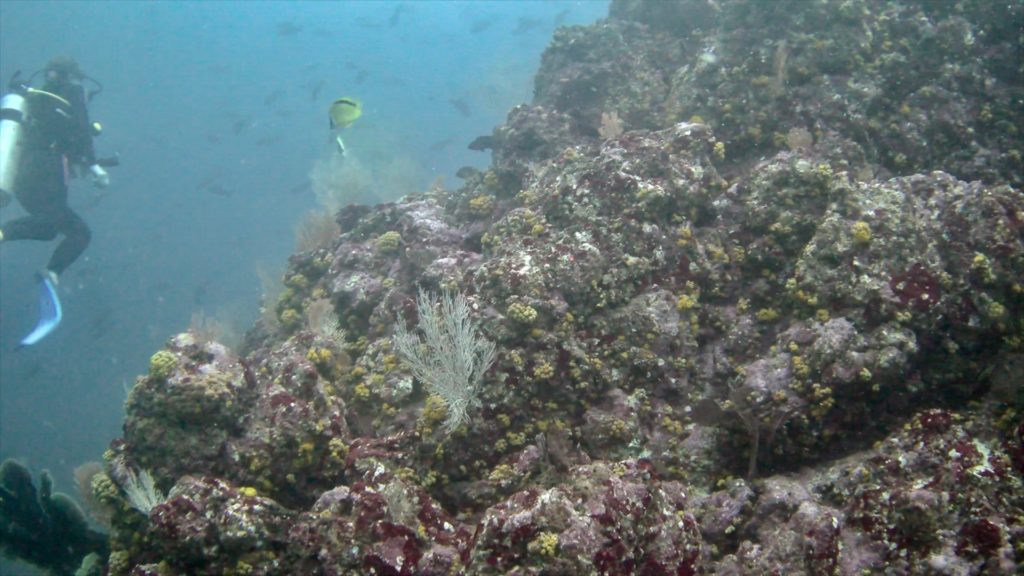
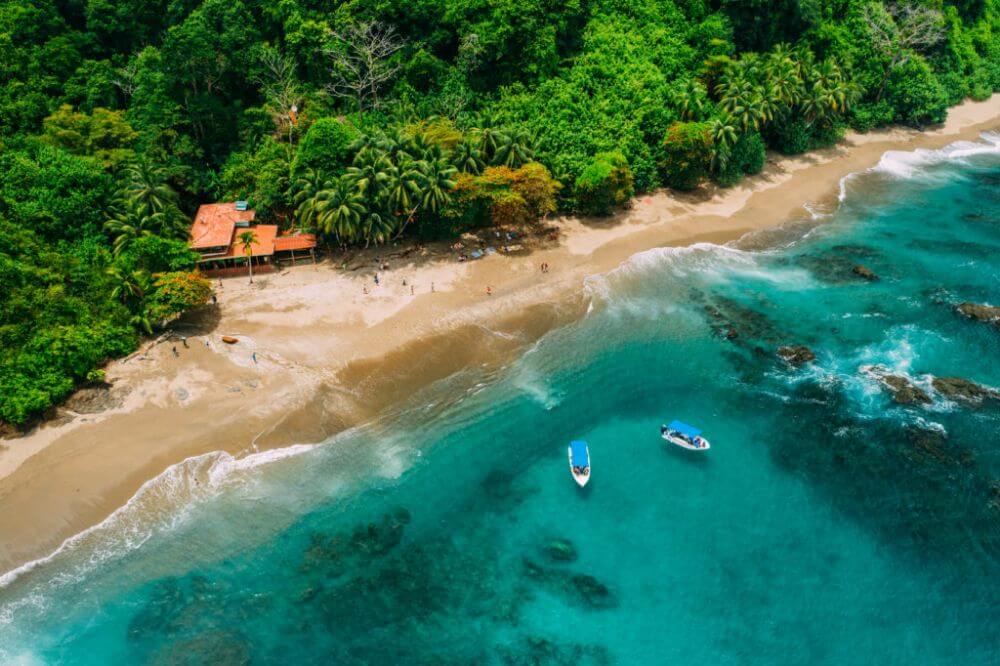
Scuba Diving Isla del Cano
My favourite thing about the dive sites around Isla del Cano was all of the beautiful coral; this is the last known substantial amount of coastal reef off Costa Rica’s Pacific side.
(Virtually all of the rest of coral reef around Costa Rica’s Pacific side has died due to El Nino induced temperature changes).
The reef here is mainly defined by purple lobe coral, an encasing hard coral which looks akin to bubbling larva.
Between the dense formations of lobe coral as well as clinging independently to rocks, there are a great many orange sea fans waving back and forth in the current.
There’s also countless sun polyps; vibrantly yellow soft corals that look like clusters of sea anemones with many visible tentacles around the centre of each bulb like body.
These guys are all around the Isla del Cano dive sites and often fall against a spectacular backdrop of crimson red sponge which also stretches out across large expanses of rock and sea bed.
You can also see much smaller clusters of various species of branching coral, cats paw coral and leaf coral in reds, yellows and greys.
The underwater volcanic rock formations create a rich landscape of coral coated canyons, walls and pinnacles to create a colourful and varied labyrinth which is a lot of fun to explore.
The best dive sites for such exploring like this are El Diablo, Coral Gardens and Lighthouse. El Diablo is my all time favourite, although it also takes the longest to reach on the boat!
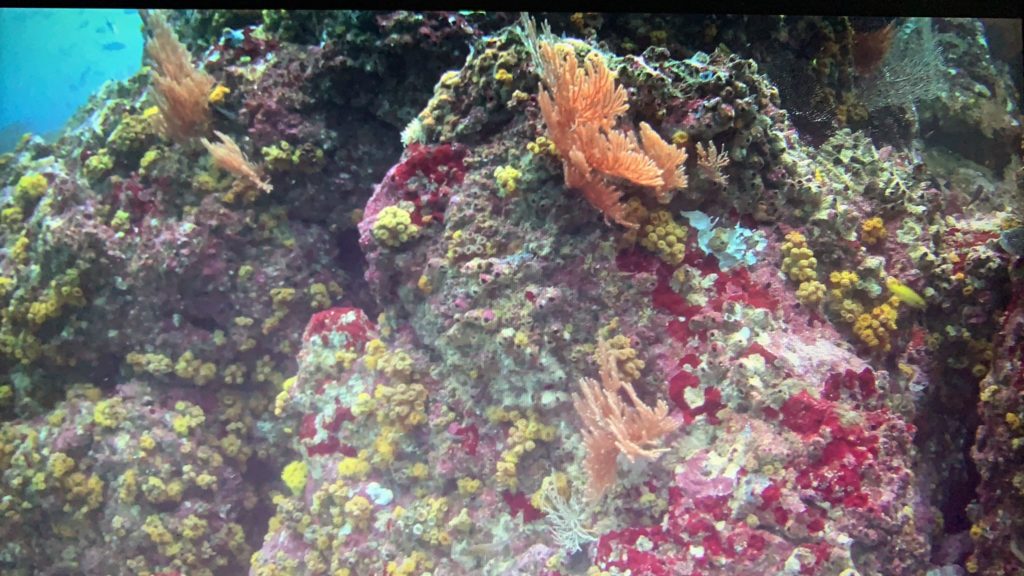
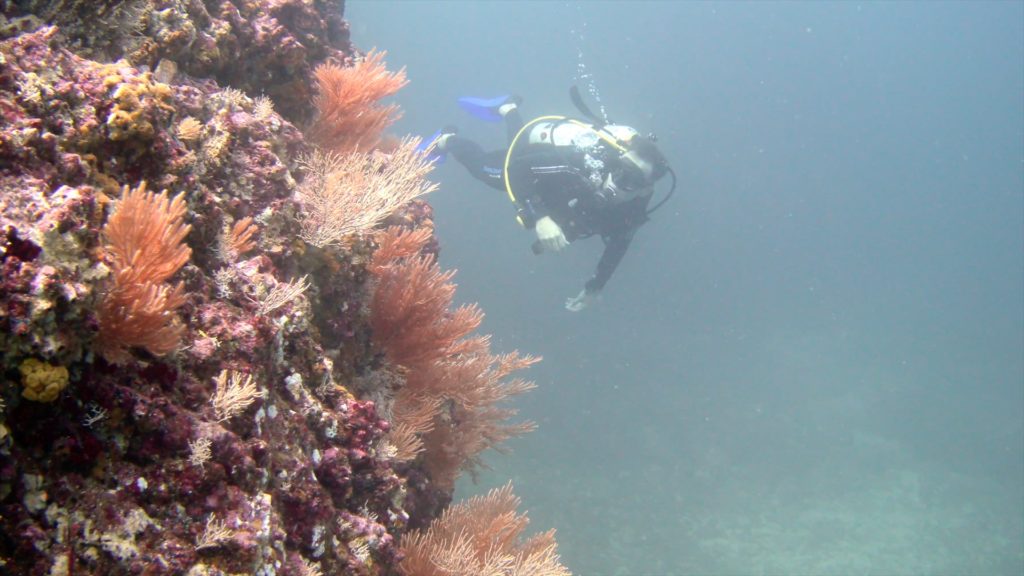
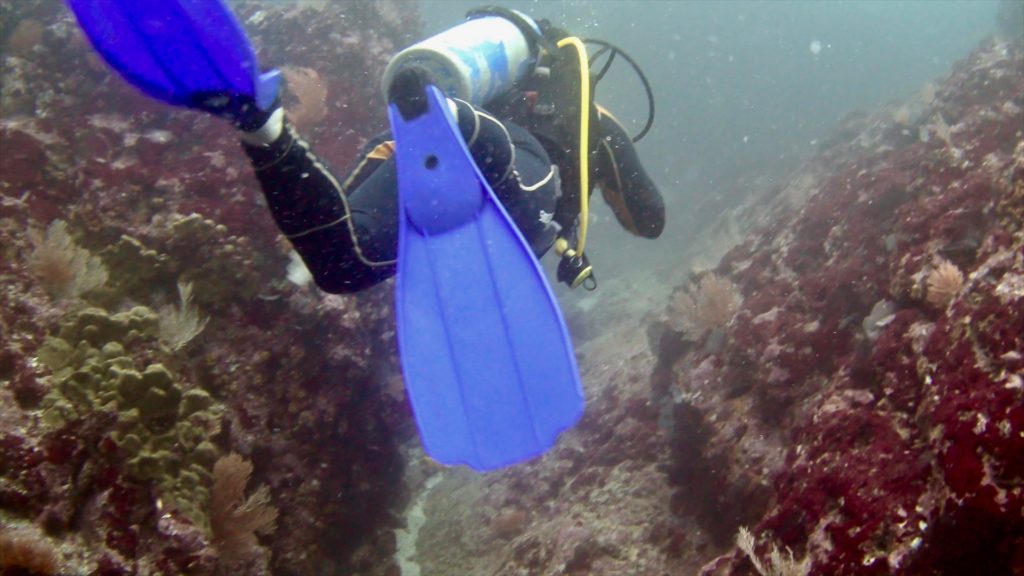
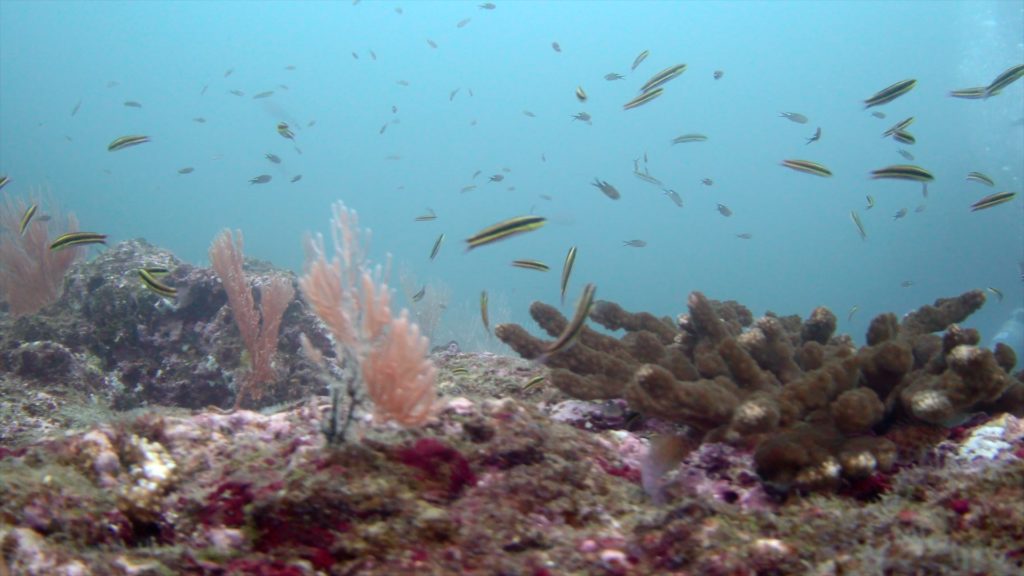
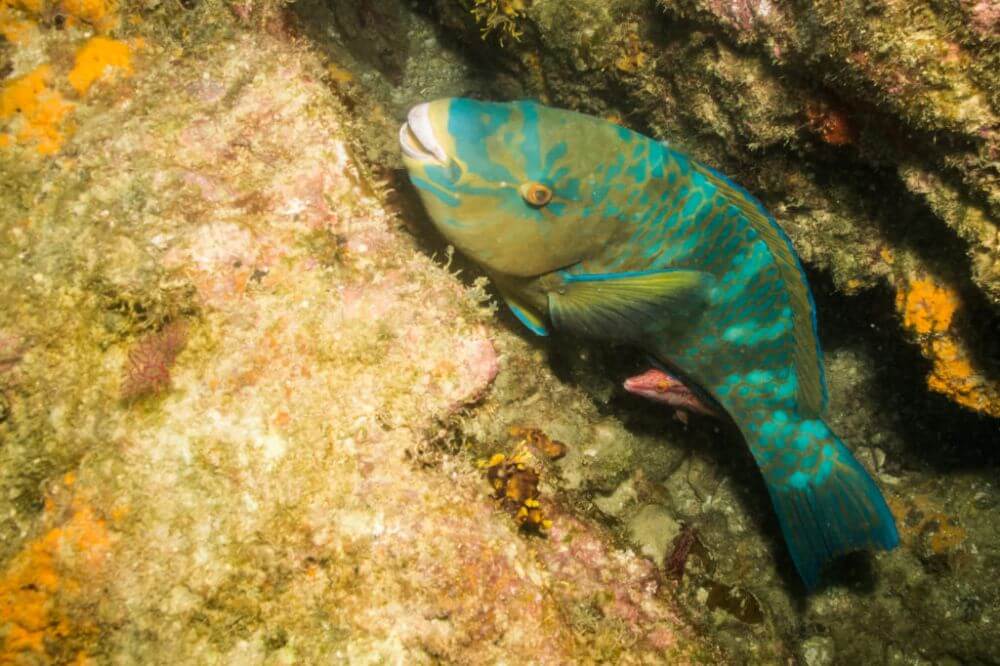
Among the 19 species of coral, there are a great many of the small, colourful reef fish typical of eastern pacific reefs with plenty of damselfish, butterflyfish and clownfish as well as moorish idols, puffers, wrasse and barracuda.
For me, the coolest fish of Isla del Cano is the Parrotfish; so named because of their bright green-turquoise scales (which are also unusually large giving the appearance of feathers) and the fact they have beaks.
On first inspection, they appear to be taking bites out of the coral reef but they are in fact performing a vital role by cleaning it of algae; although this algae is important to coral health, if left unchecked it can suffocate coral, so the Parrotfish is performing a vital role for the reef’s health!
Because parrotfish rely on coral reef for food, shelter and a nursery, Isla del Cano is one of the last places in Costa Rica’s Pacific side where you can see these awesome looking fish in high numbers.
There’s also seahorses, frogfish, scorpionfish and harlequin shrimp and less ideally, an increasing number of crown of thorns starfish, which whilst undeniably cool and mighty looking are a scourge to the reef they feed upon.
In addition to smaller critters, Isla del Cano is also home to many whitetip reef sharks; 5ft long sharks that are harmless to humans but still look and move in a most awesomely shark like way.
Divers also regularly spot a great number of pelagic fish species such as large schools of giant barracuda, tuna and snapper.
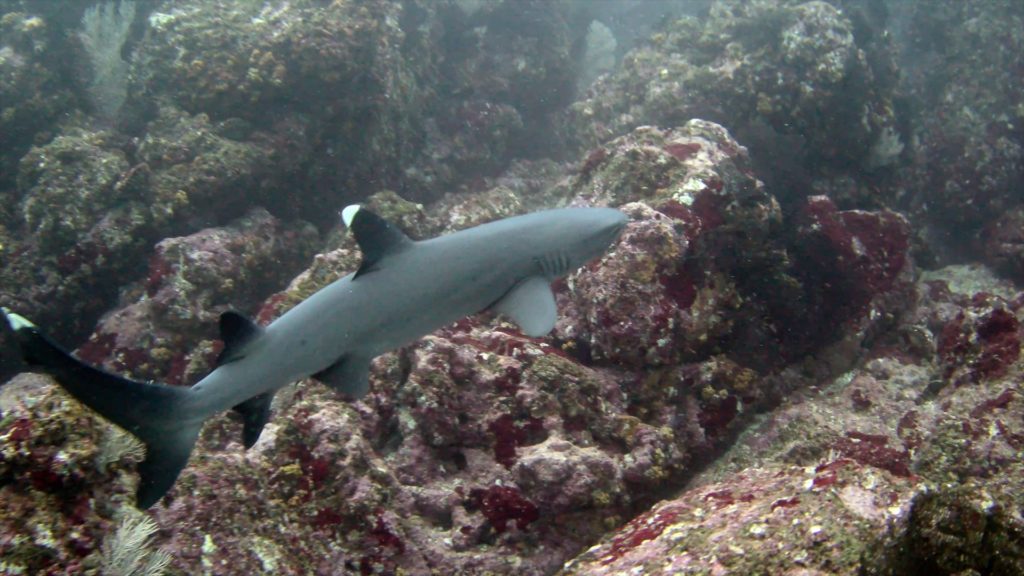
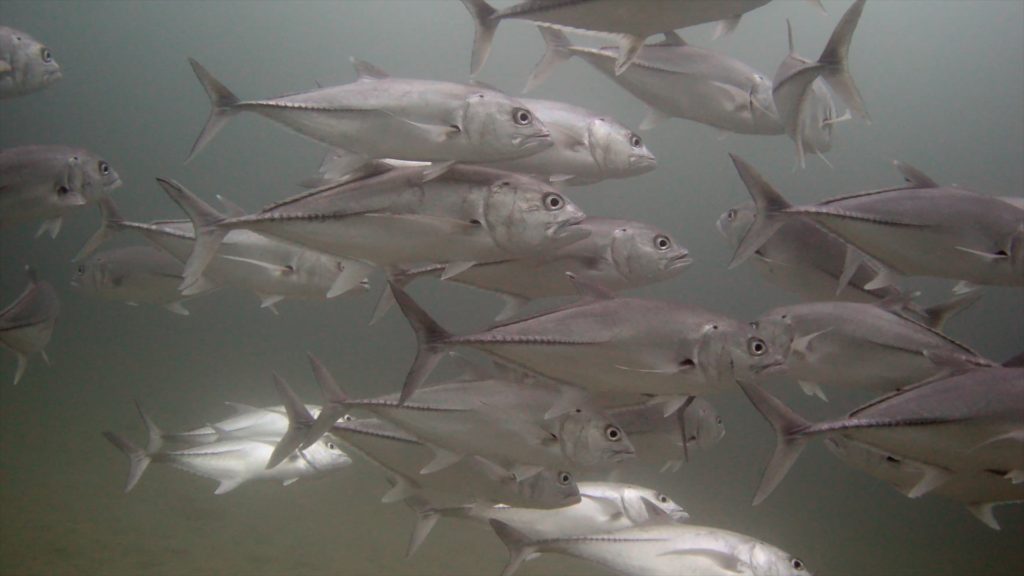
Generally you’re most likely to see these larger fish swimming in deeper bodies of open water as well as sometimes hiding among the coral coated canyons and caves that form the twisting labyrinths around El Diablo and Lighthouse.
There’s also quite a lot of turtles and a few southern stingrays to be seen when scuba diving Isla del Cano, perhaps not quite as many as at Playa del Coco but still a good amount!
Between late December and early March, many manta rays also pass through Isla del Cano. In fact, my favourite Isla Cano dive site, El Diablo, is named after these creatures:
Over a hundred years ago, possibly drunk on tequila fishermen named the area “El Diablo”, diablo meaning devil, after mistaking the long pointed tails and horns of a manta ray swimming deep down for the dark lord himself.
So if you go between late December to early March, you’ve got a great chance of spotting many of these charming devils yourself!
Currently the rangers around Isla del Cano are conducting a lot of research into the migratory patterns of these animals.
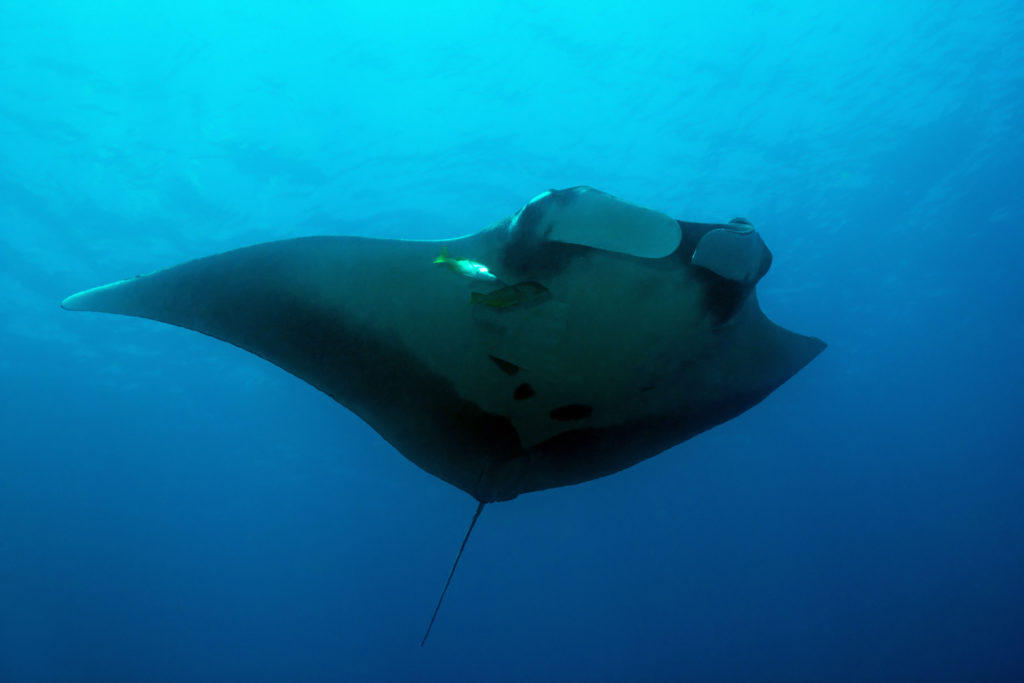
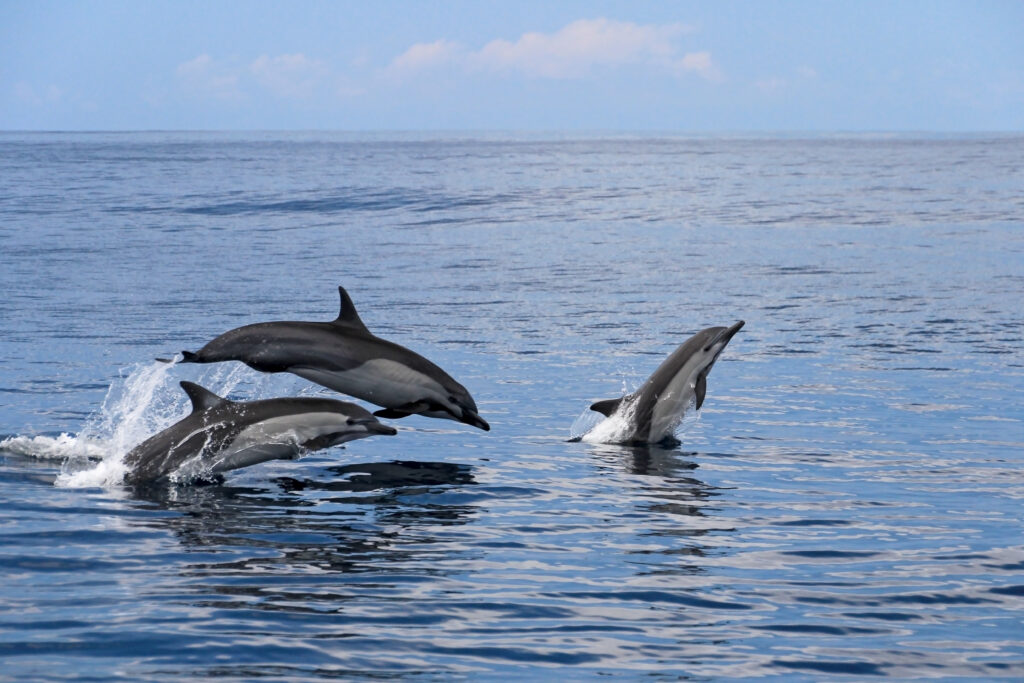
From December to March, extra lucky divers can even glimpse scalloped hammerhead sharks. Your best chance at seeing one is to wait at the cleaning station Lighthouse for the majority of a dive.
These sharks are notoriously shy though and any noise can disturb them, so unless you’re in a calm group thats not making loads of bubbles, you probably won’t see any.
Extremely lucky divers also have the chance to encounter dolphins and whales at deeper dive sites, this happens a handful of times from December to March and July to November.
Even if you don’t see whales or dolphins underwater, your odds of seeing some on the boat ride from Drake Bay to Isla del Cano are extremely decent.
A quick side note: I’d promised you guys that I’d try to capture some aerial shots of Isla del Cano with my trusty drone. As you can probably see there is a distinct lack of drone footage in the above video. Why you ask?
Well as it would turn out, I took my drone on the very small dive boat with me and launched it into the air; promptly flying it several km from the boat. It was only when I’d gotten my drone virtually out of sight that my controller began to beep and tell me that the battery was low.
What ensued was a manic five minutes as I raced a drone I could not see (because it was too high in the sky) back towards the boat, desperate to get it there before the battery went totally flat and it dropped into the ocean.
Aided by other people on the boat with cries of “go left – no that’s right – left, left, left”! I finally got it back into the boat. Turns out the batteries were faulty and so I didn’t use it for any of this trip. To have a less spectacular balls up when flying a drone than I dd, check out this guide to avoiding going insane whilst travelling with a drone (which I very nearly did).
Picking a Dive Centre
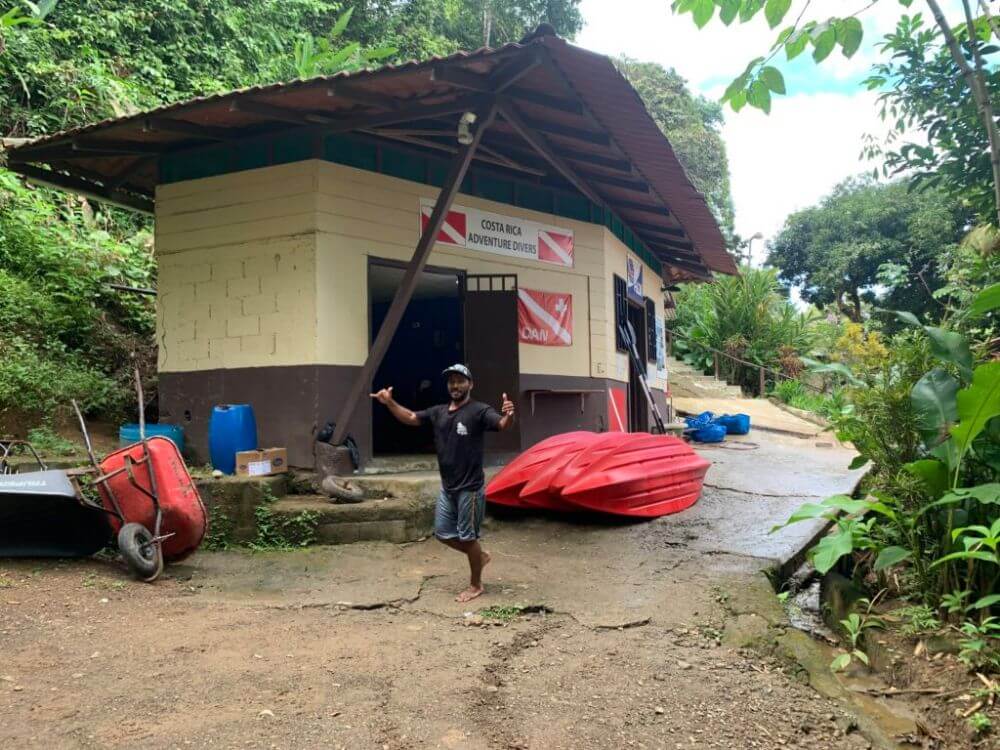
You can’t actually stay on Isla del Cano; this is a strictly protected biological reserve. The closest area to Isla del Cano is Drake Bay. I’ll go into more detail about reaching and staying at Drake Bay further down in this article, but first let’s talk about which Drake Bay dive centre you should choose to take you to Isla del Cano.
Drake Bay has a total of four dive centres and whilst I’ve only heard good things about the lot of them, I’m extremely pleased with the one I chose to dive with: Adventure divers.
What really made this dive centre special were the two dive guides / instructors; JP (Jean Paul) and Federico who poured a boundless yet very laid back kind of energy into everything from dive briefings to just interacting with the guests.
I really enjoyed hanging out and diving with these two hilarious yet professional dudes of dive instructors; they have a formidable knowledge of the reef ecosystem around Isla del Cano, being able to explain in detail how it has developed and changed over the previous few decades as well as the conservation work currently ongoing there.
In fact, you can check out this Diving Squad Video Interview about Isla Cano with JP from Adventure Divers here!
Another awesome thing about Adventure Divers, when you dive with them, the price also includes a lunch after you get back to shore which is pretty much ready as soon as you arrive at the restaurant. This is a really nice way of re-energising from the mornings dives whilst shooting the shit with your dive buddies over a beer or three.
Perhaps because their awesomeness is just too great for their competitors to be too close to, Adventure Divers are located a little way away from the other dive centres and establishments of Drake Bay.
To reach them, walk to the west end of Playa Colorada; you can follow the beach or keep to the dirt track a hundred feet in from the beach.
When the dirt track seems to end, it actually curves slightly round left to a hanging bridge which you can cross; if you keep walking along the beach, you’ll have to cross through a tiny stream, which is totally fine unless you don’t want to get your feet due to wearing trainers or the like.
Weather you cross over the bridge or through the stream then climb up onto the cement path in from the the beach, you’ll come to a small concrete hill; ascend it and in less than a minute you’ll be at Adventure Divers, where in the mornings, coffee awaits! Make a reservation or find out more about them by checking out the Adventure Divers Website.
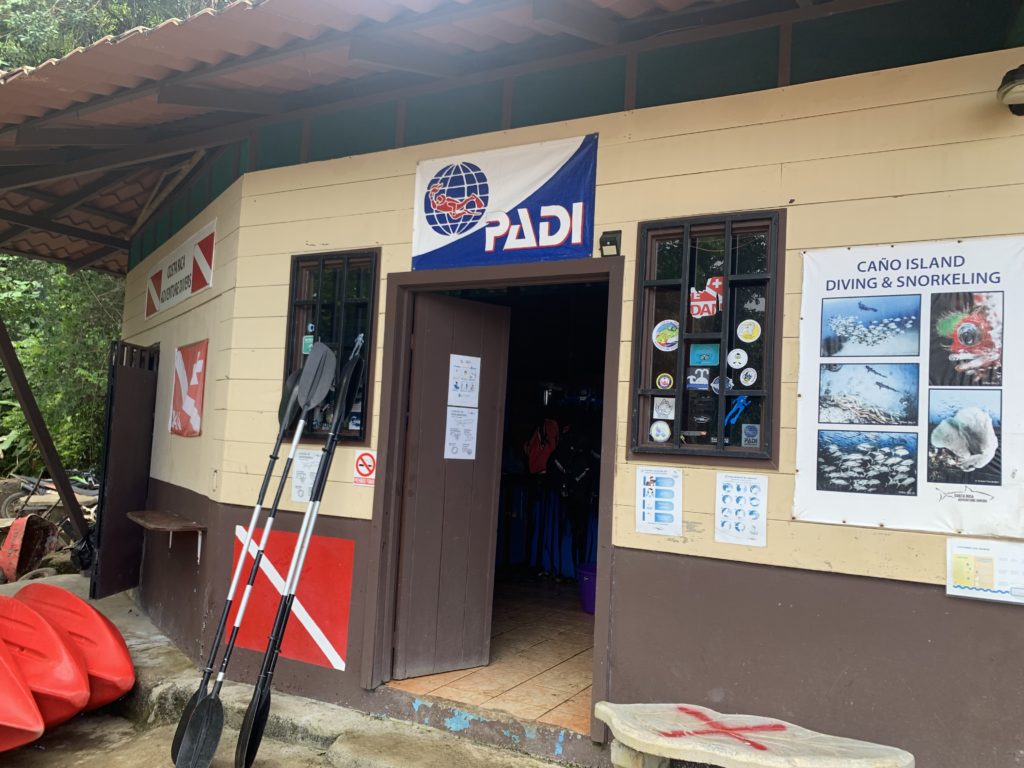
Best Time for Diving Isla Cano
You can dive Isla del Cano all year round; most of it’s dive sites do not exceed 18m / 60ft and experience little in the way of current (with the exception of Diablo and Lighthouse, although these are still fairly easy dives).
That said, there’s two distinct seasons to Costa Rica which do affect visibility and some of the species you might see.
- December – April: This marks Costa rica’s dry season, when there can be weeks or even months with practically no rainfall. During this time, water visibility is at it’s greatest, especially around January and February. From late December to early March manta rays are a common sight as they migrate through the area. Extra lucky divers may even see scalloped hammerhead sharks, dolphins or whales!
- May – November: Costa Rica’s rainy season is when water visibility is at it’s poorest, although you can still see enough to be blown away – I actually made my first Isla del Cano diving video during late November so see for yourself! July – November is also another time when dolphins and whales migrate through the area, plus the part of the year that divers could glimpse bull sharks.
Getting There
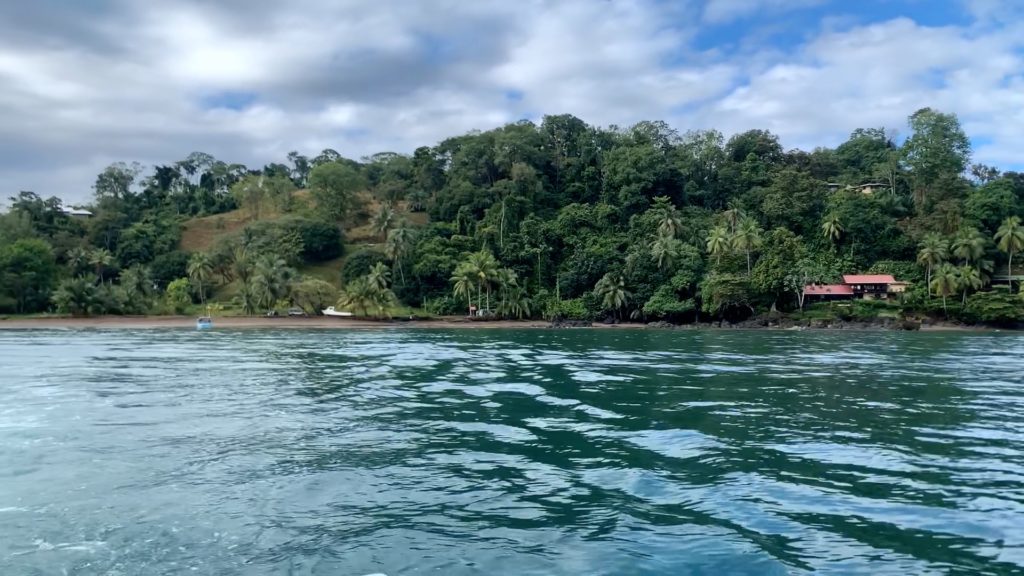
Don’t forget that you can’t actually stay on Isla del Cano as it’s a specially protected biological reserve. The closest (only) place you can stay and easily reach Isla del Cano from is Drake Bay; a tiny and remote area on the north tip of the Osa Peninsular. From Drake Bay it’s only a half hour boat ride to Isla del Cano.
There’s no denying that Drake Bay is among the hardest to reach of all of Costa Rica’s destinations – it’s largely cut off from the mainland by rivers, some of which get quite deep around rainy season meaning that there is no direct bus there and only 4 X 4 vehicles will manage the drive.
To get from some other part of Costa Rica to Drake Bay, you have two options:
- Drive in a 4X4. Be aware that towards the final part of this journey it becomes especially challenging with vague or non-existent road signs and rivers that may be considerably deep, especially around rainy season.
- Catch a bus or taxi to Sierra village and from there take the boat ride to Drake Bay, which takes just under an hour and provides some spectacular riverside views. Be aware that at the end of the journey, you’ll get out of the boat and be up to your knees in water when you reach Drake Bay.

Other Stuff to Do
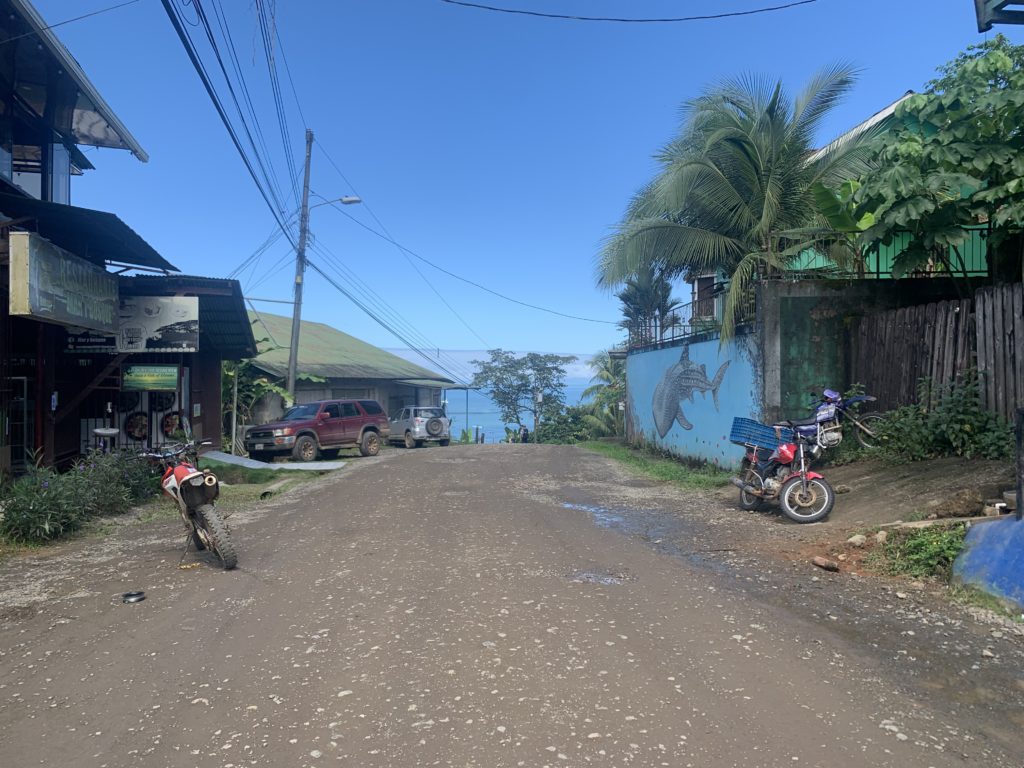
Drake Bay is one of the most remote and smallest touristic areas in costa Rica. The highstreet is truly tiny with just a couple of small market stores and half a dozen or so restaurants.
There are no ATM’s and using a credit card incurs a 10% additional fee so try and take plenty of cash with you. WiFi is also extremely slow and it’s not uncommon for the area to experience 24 hour power cuts.
There’s some great trekking routes and secluded beaches around the area which you can explore by foot or with a rental ATV for anywhere from an hour to a whole day. Besides that, there’s not much else to do!
This is a great place to simply chill and explore by ATV, horse or foot and dive. The vast majority of tourists stay for just one or at most two days and come for one reason: to trek Corcovado National Park, which for me, was the second best thing about the place – after the diving! I’ll explain how to explore Corcovado in the next section below!

Corcovado National Park
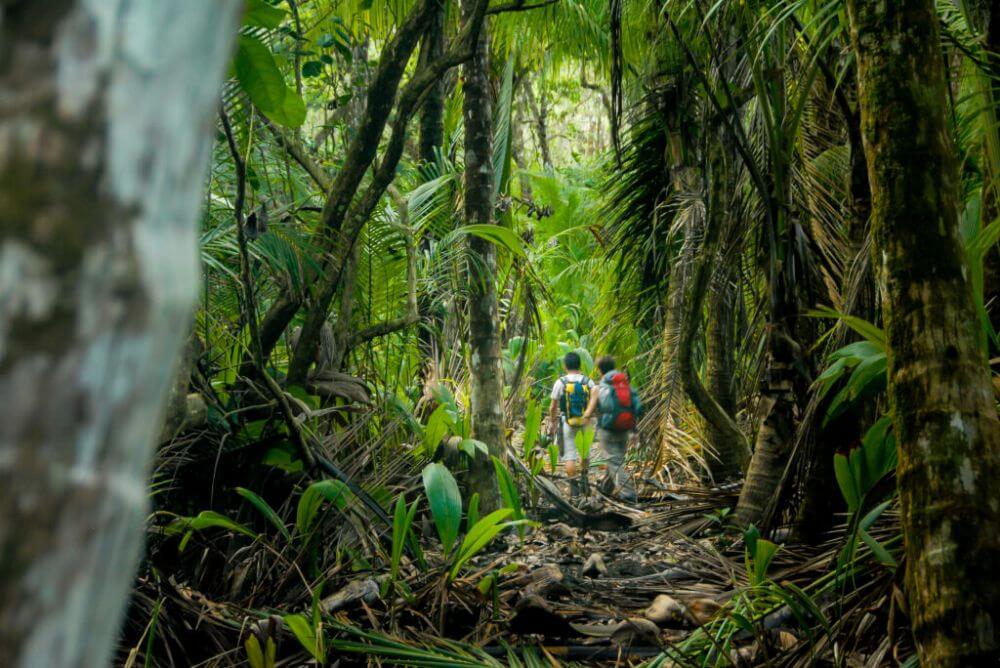
Corcovado National park is the largest and most impressive of Costa Rica’s wildlife reserves, described by National Geographic as “the most biologically intense place on Earth in terms of biodiversity”.
It is one of the very few remaining lowland topical rainforest in the world and also the largest primary rainforest on the American pacific coastline. This is a place rich with monkeys, tapirs, pumas, jaguars and vast numbers of bird, reptile, amphibian, insect and plant species.
Access to Corcovado National Park is strictly regulated – you have to enter with a guide, must stick to the trails and can’t stay for long. Plus, it’s pretty expensive. But in my opinion, it’s totally worth it, as you will see a huge variety of charismatic jungle animals in their natural habitat all within a very short space of time. Your options to visit are as follows:
- Half day visit for $95.
- One night visit for $300.
- Two night visit for $500.
There are several tour stands in the main road of Drake Bay from which it’s extremely easy to arrange a tour to Corcovado National Park; if you’re staying at an airbnb, hotel or hostel, your host can also help you with this.
Meeting time is 5:50 am. Try and eat something before you go as you can’t take any food into the national park. To get there, is a forty minute boat journey which can be quite rough and ends with you being up to your knees or even waist in water when you get on and off the boat.
I did the half day trip and was blown away by how much I saw in just four hours – huge families of coatis and peccaries, spider monkeys, howler monkeys, squirrel monkeys, capuchin monkeys, a mother caiman with her babies, stingless bees, snakes, an arboreal anteater and a great many colourful birds including raptors, woodpeckers and parrots.
Because the area has had special protection and been devoid of hunting for 30 years, these animals are extremely relaxed around humans so you’ll be amazed how close you get to them.
Admittedly you only get to explore a tiny part of the outer fringe of Corcovado National Park; the rest is closed off to visitors in order to better protect it, which is a great idea and the wildlife pickings are so rich even around the part you can explore, you’ll definitely leave satisfied.

Isla del Cano Diving Squad DEBRIEFING:
Diving Squad – at ease! In this monster guide, I’ve covered everything you need to know about scuba diving Isla del Cano – what makes it a special place, the marine species you can see there, my favourite dive centre, how to get there, where to stay and what else there is to do!
Of course Isla del Cano isn’t the only Costa Rican destination that’s good for scuba diving – check out my main page on Costa Rica diving here.
Or read about how Isla del Cano was just one of many locations that I visited during my year long odyssey diving and driving Central America.